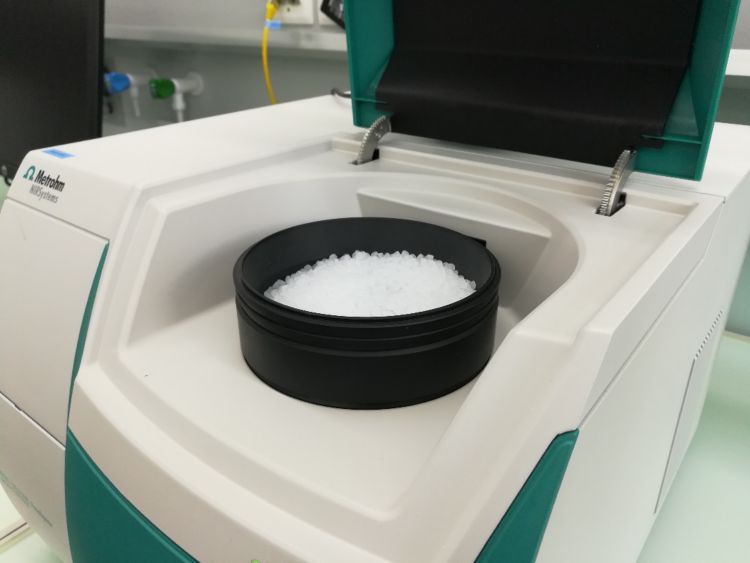Identification of individual polymers with FT-IR spectroscopy can be a challenge due to sample inhomogeneity especially when larger sample sizes need to be analyzed.
This application note demonstrates that the DS2500 Solid Analyzer operating in the visible and near infrared spectral region (Vis-NIR) provides a reliable and fast solution for the identification of high-density polyethylene (HDPE), low-density polyethylene (LDPE), and polypropylene (PP). With no sample preparation or chemicals needed, Vis-NIR spectroscopy allows the identification of larger inhomogeneous sample amounts in less than a minute.

HDPE, LDPE, and PP pellets were measured in reflection mode with a DS2500 Solid Analyzer over the full wavelength range (400–2500 nm). A rotating DS2500 Large Sample Cup was employed to overcome the distribution of varied particle sizes and chemical components. This allowed automated measurements at different sample locations for a reproducible spectrum acquisition. As displayed in Figure 1, samples were measured without any preparation. The Metrohm software package Vision Air Complete was used for all data acquisition and prediction model development.
| Equipment | Metrohm number |
|---|---|
| DS2500 Analyzer | 2.922.0010 |
| DS2500 Large Sample Cup | 6.7402.050 |
| Vision Air 2.0 Complete | 6.6072.208 |
A correlation algorithm was applied to the measured Vis-NIR spectra (Figure 2) to create a prediction model for the identification of the individual polymer types. The quality of the prediction was evaluated using built-in statistical tools, which display the correlation value distribution between Vis-NIR prediction and product class (Figure 3). The high correlation values of 0.985 and above, together with the fact that no polymer was misidentified, highlight the feasibility of NIR spectroscopy for identification of different polymer types.
This application note demonstrates the feasibility of NIR spectroscopy to identify different types of polymers. In comparison to the FT-IR spectroscopy method, no sample preparation is needed. Further, the rotating sample cup system allows also the fast analysis of large inhomogeneous sample sizes.
 Share via email
Share via email
 Download PDF
Download PDF